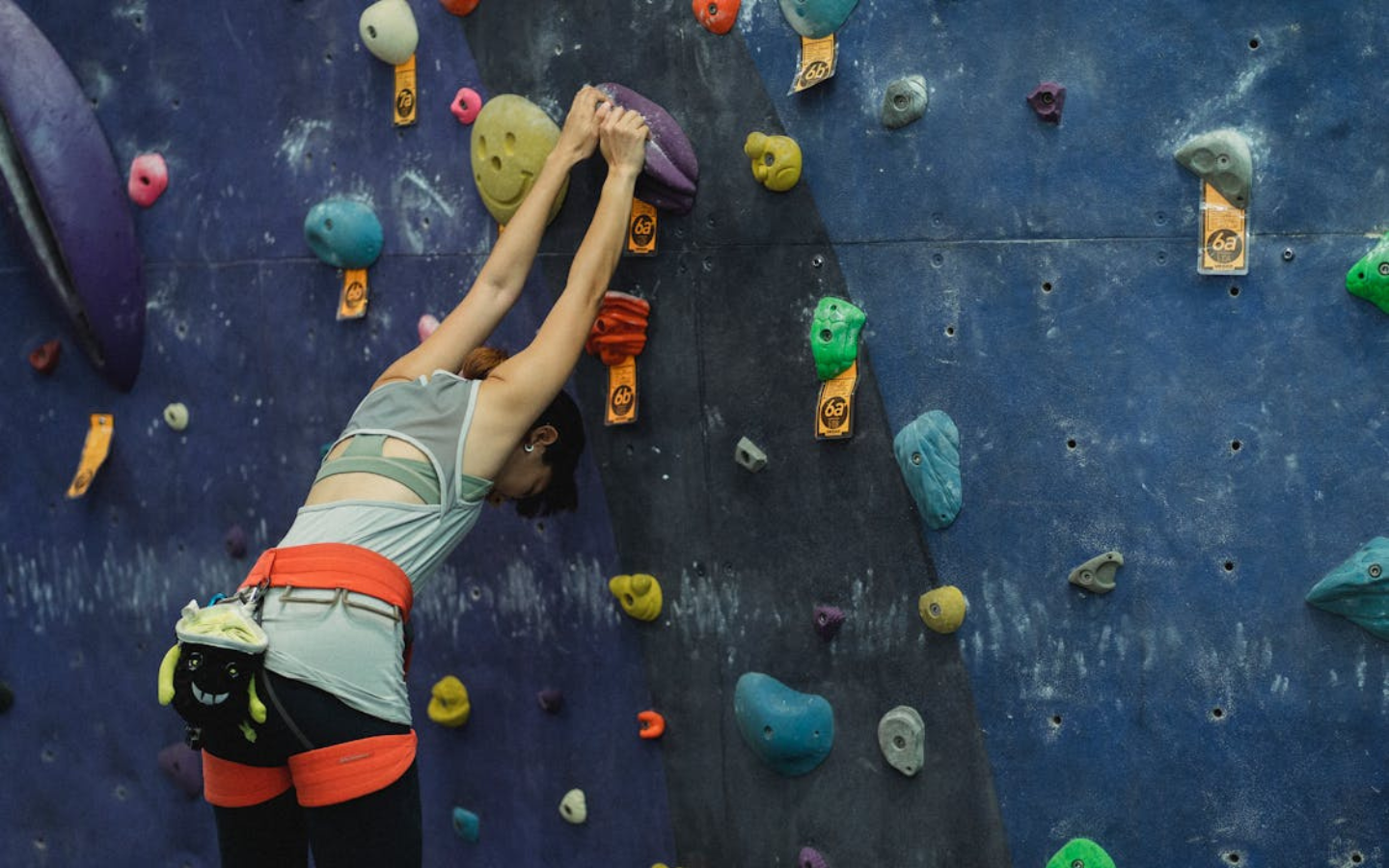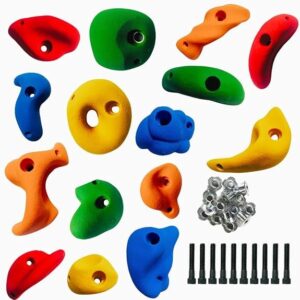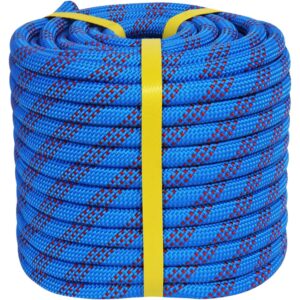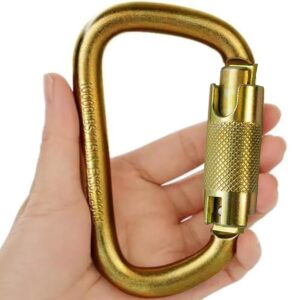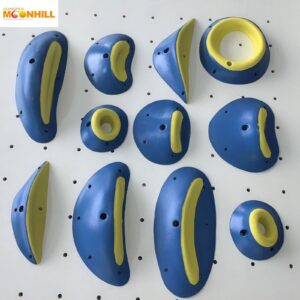🌈 Introduction: Turning Walls Into Adventures
In an age where screens dominate playtime, finding creative ways to keep children physically active can feel challenging. Yet, one simple solution is quickly gaining popularity among parents, schools, and fitness enthusiasts — climbing holds for kids.
These colorful, textured grips transform ordinary walls into exciting climbing spaces where children can play, explore, and grow stronger — all while having fun. Whether installed indoors or outdoors, climbing walls built with kid-friendly holds offer an engaging mix of exercise, coordination, and confidence-building that few activities can match.
Let’s dive deep into everything you need to know about climbing holds for kids — from their benefits and types to setup ideas, safety guidelines, and expert tips for creating your own home climbing wall.
🧒 What Are Climbing Holds for Kids?
Climbing holds are hand- and foot-grips designed to simulate the experience of rock climbing. For kids, these holds are specially crafted to ensure comfort, safety, and fun.
They’re made from durable materials like resin, polyurethane, or plastic composites, and come in a wide range of shapes, textures, and colors. The goal is simple — to help kids climb safely while improving strength, balance, and coordination.
A typical set of kids’ climbing holds includes grips shaped like rocks, animals, stars, or geometric forms. They can be easily mounted onto plywood walls, playsets, or even trees using bolts and screws, allowing you to create a customized climbing adventure zone.
🌟 Why Every Child Should Try Climbing
Rock climbing might look like just a physical activity, but for children, it’s a complete developmental workout. It’s not just about strength — it’s about thinking, moving, and growing in every direction.
Here are the most important benefits of climbing for kids:
💪 1. Builds Physical Strength
Climbing engages nearly every major muscle group — arms, legs, shoulders, back, and core. It improves endurance, flexibility, and grip strength naturally, making it one of the best full-body exercises for kids.
🧠 2. Enhances Focus and Problem-Solving
Each climb is like a puzzle. Kids have to plan their next step, think about balance, and make quick decisions. This develops cognitive and spatial awareness, improving focus and critical thinking.
🌈 3. Boosts Confidence and Emotional Growth
Reaching the top of a wall gives children an incredible sense of accomplishment. It teaches persistence, patience, and resilience — lessons that extend far beyond playtime.
⚖️ 4. Improves Balance and Coordination
As kids climb, they learn how to distribute their weight and coordinate hand and foot movements. This directly benefits posture, reflexes, and fine motor control.
❤️ 5. Encourages Social Interaction and Teamwork
In group settings, climbing walls foster cooperation and communication. Kids learn to cheer each other on, share turns, and solve challenges together.
🪜 Types of Climbing Holds for Kids
Not all climbing holds are the same. They vary in size, texture, and difficulty. For a safe and engaging wall, it’s important to mix different types:
1. Jug Holds
These are large, easy-to-grip holds with deep pockets for hands. Perfect for beginners and younger kids who are still developing grip strength.
2. Crimps
Small edges that require precise finger placement. Best used sparingly or for older children with climbing experience.
3. Slopers
Rounded, smooth holds that teach balance and friction control. Great for developing subtle grip skills.
4. Pinches
These require kids to squeeze the hold from the sides — excellent for improving finger and thumb strength.
5. Foot Holds
Smaller grips designed for stepping. They help kids learn proper foot placement and body alignment.
When designing a wall for children, the key is variety with safety — combining easy jugs and moderate pinches while avoiding overly sharp or small holds.
🏠 How to Build a Climbing Wall for Kids (Step-by-Step)
Creating your own DIY climbing wall at home is easier than you think! Here’s a simple guide:
🔧 Step 1: Choose the Right Space
Pick a flat, sturdy wall — indoors (like a playroom, garage, or basement) or outdoors (like a wooden fence or tree structure).
🪵 Step 2: Use a Solid Surface
Mount ¾-inch plywood panels securely to the wall. Make sure it’s anchored to wall studs or a solid frame for maximum safety.
🔩 Step 3: Mark and Drill
Drill holes in a grid pattern (around 8–10 inches apart). Insert T-nuts from the back of the plywood to allow easy installation and rearrangement of holds.
🧗 Step 4: Install the Holds
Attach climbing holds using the provided bolts. Start with easier holds near the bottom and gradually increase difficulty as you go higher.
🧤 Step 5: Add Safety Mats
Always place thick crash pads or foam mats under the wall to cushion any falls.
🎨 Step 6: Decorate
Paint colorful backgrounds — mountains, forests, or space themes — to make the wall visually exciting for kids.
🌳 Outdoor vs. Indoor Climbing Walls
Both options have their advantages.
🏡 Indoor Climbing Walls:
- Safe from weather damage
- Perfect for year-round play
- Easy to supervise
- Can double as a home décor feature
🌤️ Outdoor Climbing Walls:
- Offers a natural, adventurous feel
- Builds outdoor play habits
- Ideal for backyard playgrounds or treehouses
If space allows, an outdoor setup can be combined with other play equipment like slides, swings, or rope ladders for an all-in-one adventure zone.
⚠️ Safety Guidelines Every Parent Should Know
Safety should always come first when it comes to children’s climbing activities. Here’s a checklist to keep in mind:
✅ Supervise at all times. Never let kids climb unsupervised, especially toddlers.
✅ Inspect regularly. Check for loose bolts or damaged holds.
✅ Use safety mats. Thick crash pads under the wall prevent injuries from falls.
✅ Teach technique. Show kids how to use both hands and feet properly.
✅ Start slow. Begin with short climbs and easy routes before increasing difficulty.
✅ Age-appropriate setup. Younger kids (under 5) should have lower walls, softer holds, and closer spacing.
With the right safety measures, climbing becomes one of the most secure and beneficial physical activities for kids.
🎯 Expert Tips for Parents and Educators
💡 Encourage creativity: Let kids design their own climbing routes or name their holds.
💡 Incorporate learning: Use colored holds to teach counting, shapes, or color recognition.
💡 Make it a routine: Just 15–20 minutes of climbing daily builds strength and focus.
💡 Use challenges: Set small goals (“Reach the yellow star hold!”) to keep kids motivated.
💡 Mix in group play: Siblings or classmates can take turns, improving social interaction.
🧩 Fun Climbing Wall Themes for Kids
Turn your climbing wall into a magical world of imagination!
🎠 Jungle Adventure: Animal-shaped holds with vines and leaves painted on the wall.
🚀 Space Explorer: Planets, stars, and rocket-shaped holds for an interstellar feel.
🏰 Castle Climb: Stone-pattern background with “castle tower” themed holds.
🐠 Underwater World: Sea creatures like turtles, fish, and coral-shaped holds.
🌈 Color Path Challenge: Assign color-coded routes — red path for easy, blue for moderate, green for advanced.
🔍 Choosing the Best Climbing Hold Sets
When shopping for climbing holds for kids, look for these features:
🧱 Durable Material: Resin or polyurethane holds last longer and provide better grip texture.
🎨 Bright Colors: Keeps kids visually engaged and adds energy to the wall.
🤲 Smooth Edges: Prevents scratches or discomfort during climbing.
🔩 Complete Mounting Kit: Includes bolts, washers, and T-nuts for safe installation.
🧒 Age-Appropriate Sizing: Larger holds for smaller children, medium ones for older kids.
Popular brands even offer animal or geometric sets designed specifically for children’s play zones and indoor gyms.
🧗♂️ Real-Life Impact: How Climbing Helps Child Development
Many schools and preschools have started integrating climbing walls into their play areas — and the results are remarkable.
Teachers report improvements in:
- Motor coordination and posture
- Attention span and classroom focus
- Confidence and peer interaction
- Reduced stress and anxiety through active play
Climbing encourages children to take healthy risks, manage fear, and celebrate small victories — all crucial skills for lifelong emotional development.
💬 Final Thoughts
Climbing holds for kids are much more than colorful play accessories — they are gateways to growth, learning, and confidence. With the right setup, supervision, and creativity, your child can enjoy hours of active play, indoors or outdoors, while building physical and mental strength.
So go ahead — turn a plain wall into an adventure!
Every hold they grab and every step they take brings them closer to discovering their strength, courage, and joy in movement. 🌟

